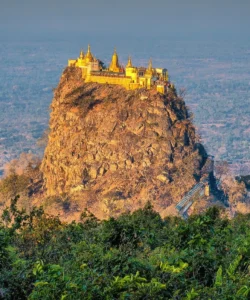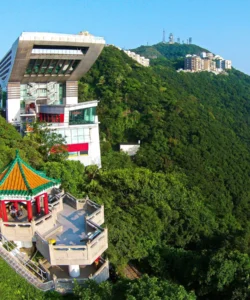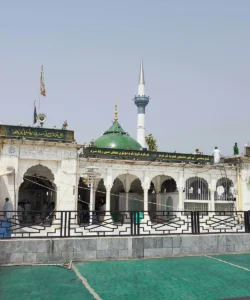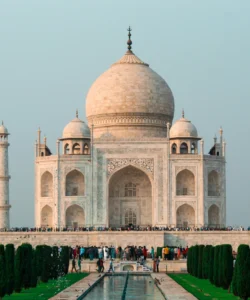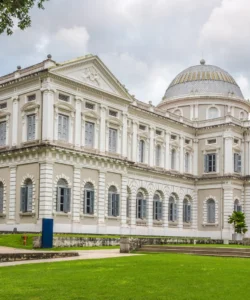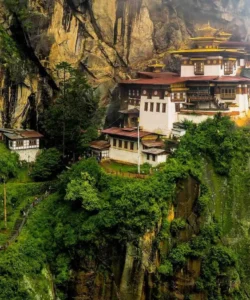Lalbagh Fort is a compelling, yet incomplete, 17th-century Mughal fort complex located in the heart of Old Dhaka, Bangladesh. Despite its unfinished state, it stands as a significant architectural legacy of the Mughal Empire in Bengal and offers a fascinating glimpse into a period of great prosperity for the region.
Name: Lalbagh Fort (Bengali: লালবাগ কেল্লা, Lālbāg Kēllā; formerly known as Fort Aurangabad)
Address: Lalbagh, Old Dhaka, Bangladesh. It is situated in the southwestern part of Dhaka, on what was once the bank of the Buriganga River (which has since retreated).
How to Get There:
Lalbagh Fort is a major historical attraction in Dhaka and is easily accessible from various parts of the city.
- By Air: The closest airport is Hazrat Shahjalal International Airport (DAC) in Dhaka. From the airport, you can hire a taxi, ride-sharing service (like Uber or Pathao), or take a local bus to Old Dhaka. The journey can take 1-1.5 hours or more depending on traffic.
- By Road (within Dhaka): Dhaka has a dense and often congested road network.
- Rickshaw/Auto-rickshaw/CNG (three-wheeler auto-rickshaw): These are the most common and convenient ways to navigate Old Dhaka. Negotiate fares before starting.
- Ride-sharing apps (Uber/Pathao): Widely available for car or motorbike rides.
- Local Bus: Numerous local bus routes serve the Lalbagh area.
- By Waterway: You can take a boat ride on the Buriganga River (e.g., from Sadarghat Launch Terminal) to experience the historic riverfront, and then take a short rickshaw ride to the fort.
- Walking: If exploring Old Dhaka’s historic lanes, the fort is a key landmark and can be reached on foot from nearby areas like Ahsan Manzil or Dhakeshwari Temple.
- Entrance Tickets: There is an entrance fee for the fort. Fees typically differ for Bangladeshi nationals and foreign visitors.
- Closed Day: The fort is generally closed on Sundays.
Landscape and Architecture:
Lalbagh Fort’s “architecture” is a blend of traditional Mughal design with adaptations for Bengal’s deltaic environment, all within a formerly grand, but now incomplete, walled garden complex.
- Incomplete Mughal Fort: The fort’s most famous characteristic is its incomplete status. Construction began in 1678 AD by Prince Muhammad Azam Shah (son of Emperor Aurangzeb), but was halted after just 15 months when he was recalled. His successor, Shaista Khan, continued briefly but abandoned the project entirely after the untimely death of his beloved daughter, Pari Bibi (Iran Dukht), inside the fort in 1684, deeming it inauspicious. This unfulfilled dream adds a layer of poignant history.
- Mughal Architectural Style: Despite its incompleteness, the fort is a fine example of Mughal architecture, blending elements of Islamic, Persian, and Indian styles. It was conceived as a miniature version of grand Mughal forts like Delhi’s Red Fort.
- Reddish Hues: The fort’s name, “Lalbagh” (Red Garden), refers to the reddish and pinkish hues of its brick and sandstone construction, typical of Mughal aesthetics.
- Three Main Surviving Structures: The completed portions of the fort primarily include three key buildings, separated by water channels and gardens:
- Diwan-i-Aam and Hammamkhana: This two-storied structure served as the Hall of Public Audience (Diwan-i-Aam) for the Mughal governor (Subahdar) and includes a Hammamkhana (royal bathhouse). Recent excavations have revealed intricate arrangements for heating and supplying water through terracotta pipes, showcasing advanced Mughal engineering for comfort. This part now houses a museum.
- Tomb of Pari Bibi (Bibi Pari’s Mausoleum): This is the most architecturally ornate and well-preserved structure within the complex. It is a central square room housing Pari Bibi’s remains, covered by a false octagonal dome and adorned with a brass plate. The entire inner wall is exquisitely veneered with white marble, and it has octagonal turrets at each corner, topped by ribbed plaster domes. It is said to have been built of black basalt, white marble, and multicolored tiles.
- Quilla Mosque (Lalbagh Fort Mosque): Located on the western side, this three-domed mosque is a beautiful example of Shaista Khani architecture (a local Mughal style) with three ribbed domes and corner octagonal minarets. It is still an active place of worship.
- Fortification Walls and Gateways: The fort complex is enclosed by substantial southern and western fortification walls (around 6-14 meters high) with octagonal bastions and gateways. The Southern Gateway is the most imposing, a three-storied structure adorned with slender minarets.
- Charbagh Style Garden: The complex’s layout incorporated elements of the Persian Charbagh (four-part) garden style, with axial relationships between buildings, water channels, and fountains, though the full grandeur of its original garden design is now lost and has been transformed into a sprawling lawn.
- Underground Tunnels: Legend speaks of secret tunnels within the fort, some leading to the now-ruined Zinzira Fort across the Buriganga River, and others forming mazes designed to trap intruders. These have since been sealed.
- Riverside Location (Historical): While the Buriganga River has retreated from the fort’s immediate vicinity, it was originally conceived to stand on the riverbank, playing a strategic role.
What Makes It Famous:
- The Unfinished Fort and the Legend of Pari Bibi: Lalbagh Fort is famously incomplete, a status deeply intertwined with the poignant legend of Pari Bibi’s untimely death. This story of love, superstition, and an unfulfilled royal dream adds a profound mystical and romantic allure to the site.
- Sole Surviving Mughal Fort in Dhaka: It is a rare and significant remnant of Mughal architecture in Dhaka, which was once the flourishing capital of Bengal. It offers a tangible link to Dhaka’s rich Mughal heritage.
- Tomb of Pari Bibi: Her exquisitely adorned mausoleum, centrally located within the fort, is a masterpiece of Mughal funerary architecture and a major highlight for visitors.
- Architectural Significance: Despite its incompleteness, the fort showcases the finesse of 17th-century Mughal craftsmanship, particularly in its brickwork, stucco designs, and the unique combination of structural elements. It also reflects the adaptation of mainstream Mughal architecture to Bengal’s deltaic environment.
- Historical Insights: The fort provides a glimpse into the administrative, military, and residential life of Mughal governors in Bengal, a period when Bengal was the “Paradise of Nations” and an economic engine of the Mughal Empire.
- Green Space in Old Dhaka: In the densely populated Old Dhaka, the fort complex’s vast expanse of gardens offers a crucial and beautiful green space for local residents and visitors alike.
- Archaeological Discoveries: Recent excavations have revealed more structures and sophisticated water management systems, offering new insights into the fort’s original design and purpose.
Differences from Some Other Wonders:
- Incomplete Status and Origin Story: The most significant difference from most other famous forts (like Lahore Fort, Red Fort) is Lalbagh Fort’s deliberate incompleteness due to a tragic personal event. This creates a unique narrative of unfulfilled ambition and superstition, making it fundamentally different from forts that were fully realized.
- “Love Story” of a Daughter (vs. Wife): While the Taj Mahal is a monument of love for a wife, Lalbagh Fort’s emotional core is rooted in the death of a governor’s beloved daughter (Pari Bibi), her tomb becoming the most complete structure within the unfinished fort, giving it a distinct, more personal, and poignant “love story” aspect.
- Mughal Architecture in a Deltaic Context: Unlike the Mughal forts in arid or semi-arid regions of India and Pakistan (Red Fort, Lahore Fort, Humayun’s Tomb), Lalbagh Fort’s design shows adaptations to Bengal’s deltaic landscape, with a focus on specific materials and possibly smaller scale reflecting regional conditions and the need for defensive features suited to riverine warfare.
- Less Grand Scale than Imperial Mughal Forts: While important, Lalbagh Fort is smaller in scale and overall grandeur compared to the massive imperial Mughal fortress-palaces in Delhi and Lahore. It was intended as a governor’s residence, not a primary imperial capital.
- Archaeological Importance for Bengal: Its primary significance is in its being the most important surviving Mughal monument in Dhaka and Bengal, offering insights specific to this eastern province of the Mughal Empire, unlike forts that represent the empire’s heartland.
- Secret Tunnels and Mazes (folklore): The local legends surrounding its secret tunnels and “mazes” where intruders supposedly got lost and died add a unique and eerie folkloric element that distinguishes it from more straightforward military architecture.
- Transformation from Military Barracks: Its later use as police barracks and cantonment by the British adds a specific layer of colonial history and urban development to its post-Mughal abandonment, distinct from the continuous royal occupation of some other forts.
Lalbagh Fort Photos:



























